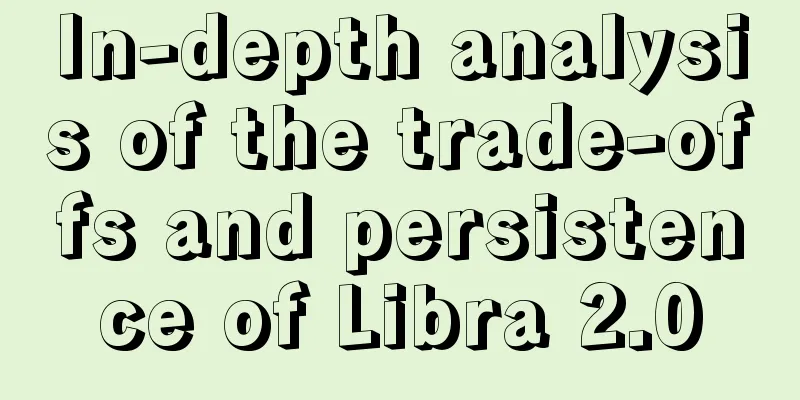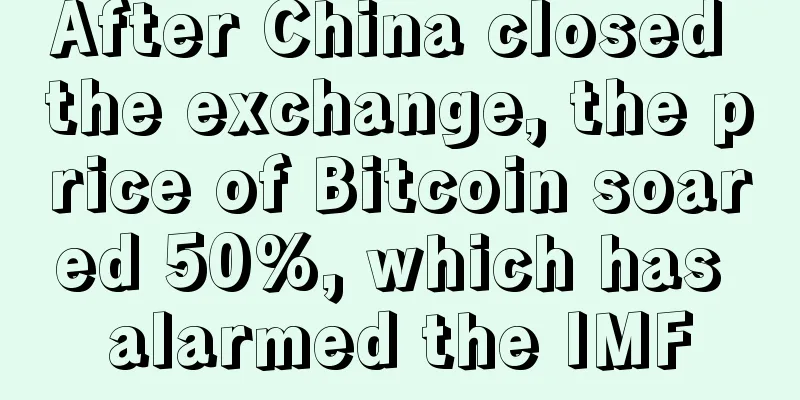In-depth analysis of the trade-offs and persistence of Libra 2.0

|
Written by Zheng Jialiang, Research Director of HashKey Capital. HashKey Capital is a blockchain investment fund under the Hong Kong digital asset group HashKey Group. The Libra Association released White Paper 2.0 on April 16, which made some major changes compared to the 1.0 version of the white paper and vision. In this, Libra showed the greatest goodwill to regulators, but we believe that Libra's long-term vision has not changed, and it has not given up the idea of becoming a financial infrastructure, and even has a more ambitious goal. This is the biggest difference between our views and the market's perception. Based on the limited information currently available, we will continue to analyze, forecast and discuss its impact on the blockchain industry. It should be noted that this article is not a comprehensive introduction to the content of the white paper. For more specific and richer information, please refer to the latest version of the white paper and related technical manuals. Trade-offs: compliance-oriented, retaining non-regulatory concerns to the greatest extent possible The white paper of Libra 2.0 clearly summarizes the changes made into four points:
In our thinking about Facebook Libra in June last year, we mentioned the possibility of a single-currency stablecoin and that the mature form of Libra would be completely different, which is reflected in the Libra White Paper 2.0. This shows that for this new technology and business form to be accepted by regulators, it will take tremendous effort, adjustment and adaptation. But at the same time, we do not think this will be the final form of Libra, and there should be a 3.0 version and an updated white paper. Among the above four changes, the first one is about compliance and economy, the second one is about compliance, the third one is about compliance and technology, and the fourth one is about economy. Therefore, Libra’s major changes are oriented towards compliance and economy. Even the economy is unified under the compliance framework, and the technological changes (abandoning the non-permissioned public chain architecture) also serve compliance. So in essence, Libra is not a technology product, but an economic framework that constantly makes trade-offs in order to adapt to multilateral supervision. Libra has not changed the core technology, such as the Move programming language and the LibraBFT consensus protocol. However, these parts are not within the scope of regulatory concern, so they are retained to the greatest extent possible. The polymorphic stablecoin architecture is for compliance purposes, and ≋USD may start first We believe that the purpose of Libra's stablecoin pegged to a single currency is firstly compliance needs and secondly practical implementation needs. In terms of compliance, it is expected that most countries will not allow SDR-like cryptocurrencies to circulate directly; secondly, stablecoins pegged to a single currency have already been verified by the market for their business model and no longer need to educate the market. Currently, stablecoins are basically pegged to the US dollar, and there are other currencies, but they are rare, so the first step for the new Libra may be whether the promotion of Libra USD (≋USD) is smooth. Although the wallet CaLibra is not mentioned in this white paper, it has been registered as an MSB in FINCEN. Moreover, the white paper also mentions that stablecoins will be sold and redeemed to end users by designated dealers, and requires designated dealers to have compliance qualifications, that is, minting occurs on the Libra network, but public issuance occurs at designated dealers. Because the MSB stablecoin issuance model has already taken shape in the United States, there is a high probability that CaLibra (or a small probability other Libra-affiliated institutions) will become the designated distributor of Libra in the United States and issue ≋USD. If ≋USD can really circulate, it will still have an impact on the blockchain industry. For example, it will directly challenge USDT (of course, the reasons for the popularity of USDT are more complicated, so I won’t elaborate on them here), and DeFi will also have an additional collateral (≋USD will not be much different from USDC). Although the circulation of ≋USD will be restricted, these impacts will actually occur. Polymorphic stablecoin architecture makes reserve management more difficult We believe that Libra’s biggest operational difficulty now, apart from regulation, lies in reserve management. The new white paper also clarifies the investment distribution of Libra reserves: 80% will be invested in government bonds that mature within three months, which must be rated S&P A+ or Moody's A1 or above and have high liquidity in the secondary market; 20% will be invested in cash, which will be invested in money market funds through overnight investment accounts. The obvious reason for the increased difficulty in reserve management is that originally, a stablecoin pegged to a basket of currencies only needed to manage a large reserve account (of course, it would also disperse risks among different actual operating accounts). Now that each currency corresponds to a stablecoin, the number of reserve accounts that need to be managed will increase sharply. We estimate that the impact will not be significant in the early stage, because there are not many places where supervision is allowed, but in the later stage, preparations need to be made for multiple currencies, and the increase in currencies will increase foreign exchange risks. Therefore, Libra has proposed that it is very much hoped that the central bank digital currency CBDC of various countries will be used in the future to replace its single currency stablecoin to reduce credit and custody risks, and there is no need for reserve account management. However, this presupposes that CBDC will be integrated with the Libra network, which is a very difficult point. Libra's persistence: Not giving up the goal of becoming a financial infrastructure Libra's grand vision, in addition to ostensibly providing services to the 1.7 billion people around the world who lack banking services, also proposes at least two potential scenarios. Although these two potential scenarios are difficult to achieve, they reflect its ambition to become a financial infrastructure. Becoming a cross-border financial settlement currency Libra's long-term goal of a basket of stablecoins has not been abandoned, and the Libra Association has even given it a more ambitious positioning, namely to become the world's settlement currency in the future. This is clearly stated in the white paper: ≋LBR can be used as an efficient cross-border settlement coin as well as a neutral, low-volatility option for people and businesses in countries that do not have a single-currency stablecoin on the network yet. Libra White Paper Version 2.0 It also gave an example of an American user using the Libra network to send money to a family member in another country. If this function is realized, it can be said to be an open version of JPM Coin, or a retail version of SWIFT for financial institutions. Become an integrated network and conversion intermediary for the central bank digital currency CBDC In addition, as mentioned above, Libra also proposed the possibility of connecting to the central bank digital currency CBDC of various countries. When a single country is not suitable for the Libra stablecoin, it can be replaced by that country's CBDC. If cross-border remittances and CBDC access can be realized, a basket of stablecoins ≋LBR will become the international settlement intermediary of CBDC. For example, although neither side uses a stablecoin pegged to a single currency, but both choose to use CBDC, then ≋LBR will naturally become the settlement currency of CBDC. The above two potential scenarios are very clear or easy to deduce in the new version of the white paper, so we do not think that Libra’s goals have become smaller, or even larger, and what may be disrupted is the existing infrastructure. Whether this vision can be realized is another matter. But since Libra has made compromises in many areas, but not here, perhaps its deep meaning is worth pondering. Greater inclusion: working with a wider range of institutions We believe that the new white paper outlines two types of participants in the Libra network: One is the five types of direct participation clearly stated:
These basically come from the government or regulatory agencies. They are the primary partners for the future promotion of Libra and the key audience of the new white paper. In the direct participation type, virtual asset providers (VASPs) are a new type of participants, and are also a type that the Libra Association has added separately to meet the regulatory requirements of the Financial Action Task Force (FATF). Simply put, virtual asset exchanges or other types of exchange institutions, regulated VASPs will not have transfer and balance restrictions. Non-custodial wallet users are the names of ordinary users of the Libra network, and there are transfer and balance restrictions. The technology is far from being finalized We believe that Libra’s technical path has not yet been fully determined. On June 18, 2019, the Libra Association announced the Libra plan and white paper, as well as three technical manuals: "The Libra Blockchian", "State Machine Replication in the Libra Blockchain" and "Move: A Language With Programmable Resources". In the future, when the three-point technical manual is changed, we will make some comparisons and analyses on the changes. At least from the current form, Libra’s major purpose changes are not yet fully prepared technically. There are still many uncertainties and possibilities in the impact on the blockchain industry Last year, we thought that Libra would have a relatively large impact on the public chain ecosystem. Since Libra has given up the possibility of becoming a public chain, the question now can be converted into: will Libra have an impact on the alliance chain? Will it become a set of standards for the alliance chain? Over the years, many alliance chain systems at home and abroad have developed relatively maturely, but no alliance chain has actually become an industry standard. After China’s policy encouragement last year, the development of alliance chains has become faster and more diverse, so even if Libra can become a relatively large alliance chain system, it will be subject to geographical restrictions, just like the current Internet landscape. In addition, the development language, the current architecture and design concepts of most alliance chains are basically derived from Ethereum. Many developers are already familiar with Ethereum's Solidity language, and the Libra network will use the Move language, which may make developers uncomfortable. Another issue is the Libra ecosystem. If the consortium chain of Libra can work, a blockchain ecosystem will emerge around Libra, and at least association members, designated dealers and virtual asset providers will become important members of the ecosystem. Another possibility is that although the Libra Association has given up the goal of becoming a permissionless public chain, will the industry use the Libra architecture to build a permissionless public chain? That would be very interesting. Expanding the boundaries of regulation We believe that the greatest value of the changes in the Libra network in just 10 months for blockchain practitioners is that it has expanded the boundaries of regulation, allowing regulators to express their views on cross-regional blockchain financial projects and (partially) clarifying what can and cannot be done. In particular, the Libra case has provided enough inspiration for blockchain projects that hope to reconstruct financial infrastructure. Although Libra is a project undertaken by a private enterprise for profit, to some extent it is an effort and exploration for the development of blockchain into a global financial infrastructure. It is not only technical, but also uses a highly-watched approach to collide with regulation to create an imperfect but perhaps feasible path. Moreover, there is a high possibility of failure. This kind of effort is not the first and will not be the last, but it may be the most memorable one: a world-leading Internet company has brought the niche blockchain technology to the public eye, accepted the scrutiny of regulators and mainstream financial institutions, and triggered the attention of central banks and companies in various countries to the blockchain industry. In the future, blockchain will be deeply commercialized, and more projects will continue to explore and expand this, and eventually a mature global blockchain regulatory framework will be built. At least, Libra has started such an attempt. |
<<: Shenma M30 new product released, 3X mining machine competition kicked off
Recommend
Despite the ban on mining, China’s bitcoin mining business continues to grow
As early as 2013, the People's Bank of China ...
Intel redefines the essence of Bitcoin and wins praise from the blockchain industry
In addition to a large number of design proposals...
What does a lonely person look like?
Human beings are social animals. We have family a...
Five Elements Fortune Query
How to check the twelve zodiac signs and the five...
What is the fortune of a woman with a mole on the left side of her neck?
Moles are very common and can be found on various...
Is it difficult for people with outward-facing ears to achieve success? Is there anyone who can help?
Each of us has our own appearance, which is deter...
What kind of palm lines bring good luck?
We can see a person's fortune, predict his ma...
ONEBIT users can pay with Bitcoin worldwide
ONEBIT, an NFC wallet application that allows use...
What kind of person looks like an emperor?
Everyone has a different appearance, so their fac...
The first blockchain in China endorsed by a personal brand - Xiaokacoin
Breaking Yuanbao.com crowdfunding record in 5 hou...
What is the fate of women with the "川"-shaped palm lines?
What is the fate of a woman with a "川"-...
How is the luck of noble people for people with knotty nose bridge?
There is a kind of facial features that I believe...
A woman with a mole on her palm
Moles can be divided into good moles and bad mole...
Palmistry to see if your fortune is good this year
Do you want to know how your fortune will be this...
How to tell from facial features whether a person is an adulterer or poor
1. Adultery 1. Both men and women have heavy hair...









